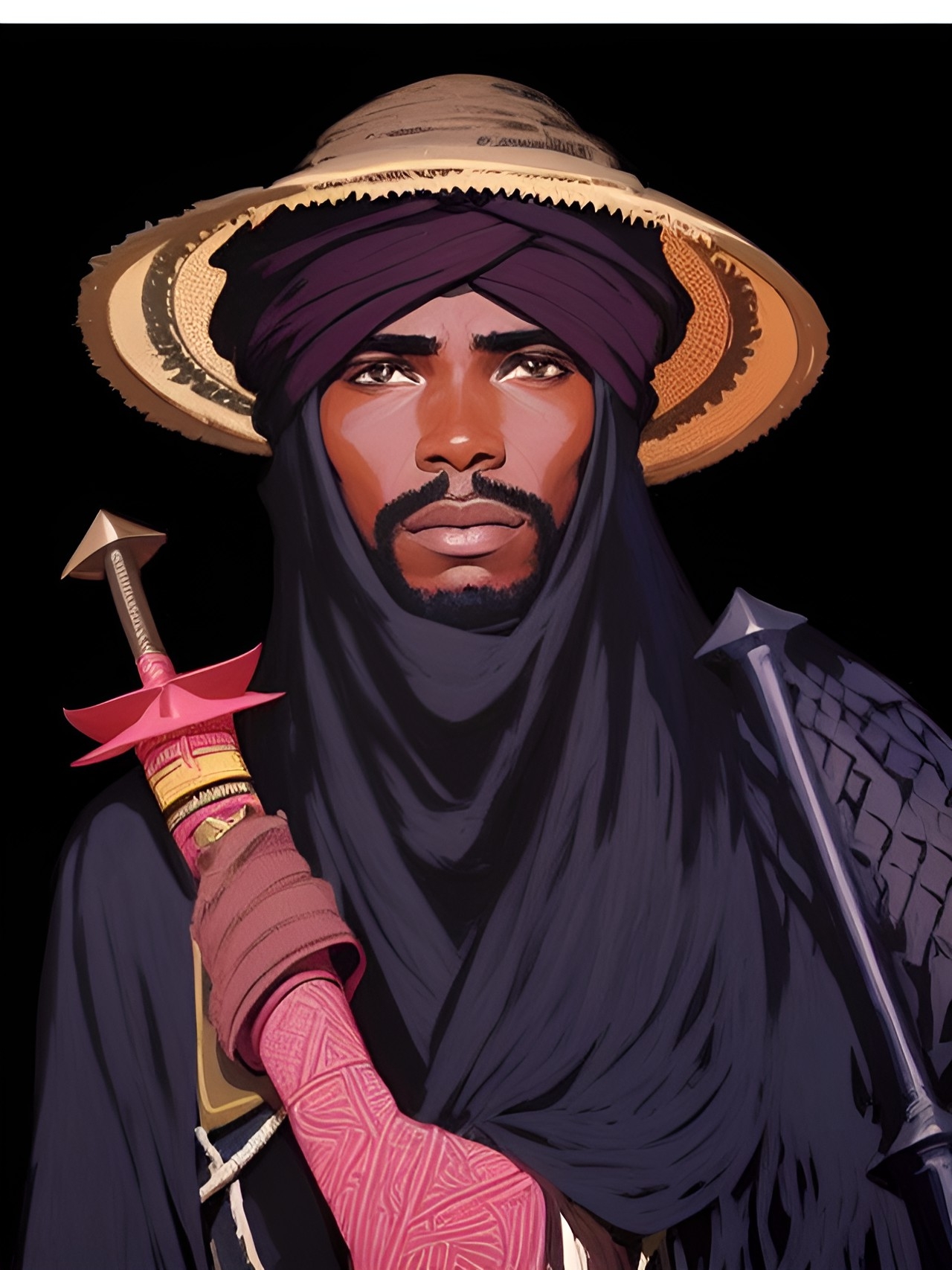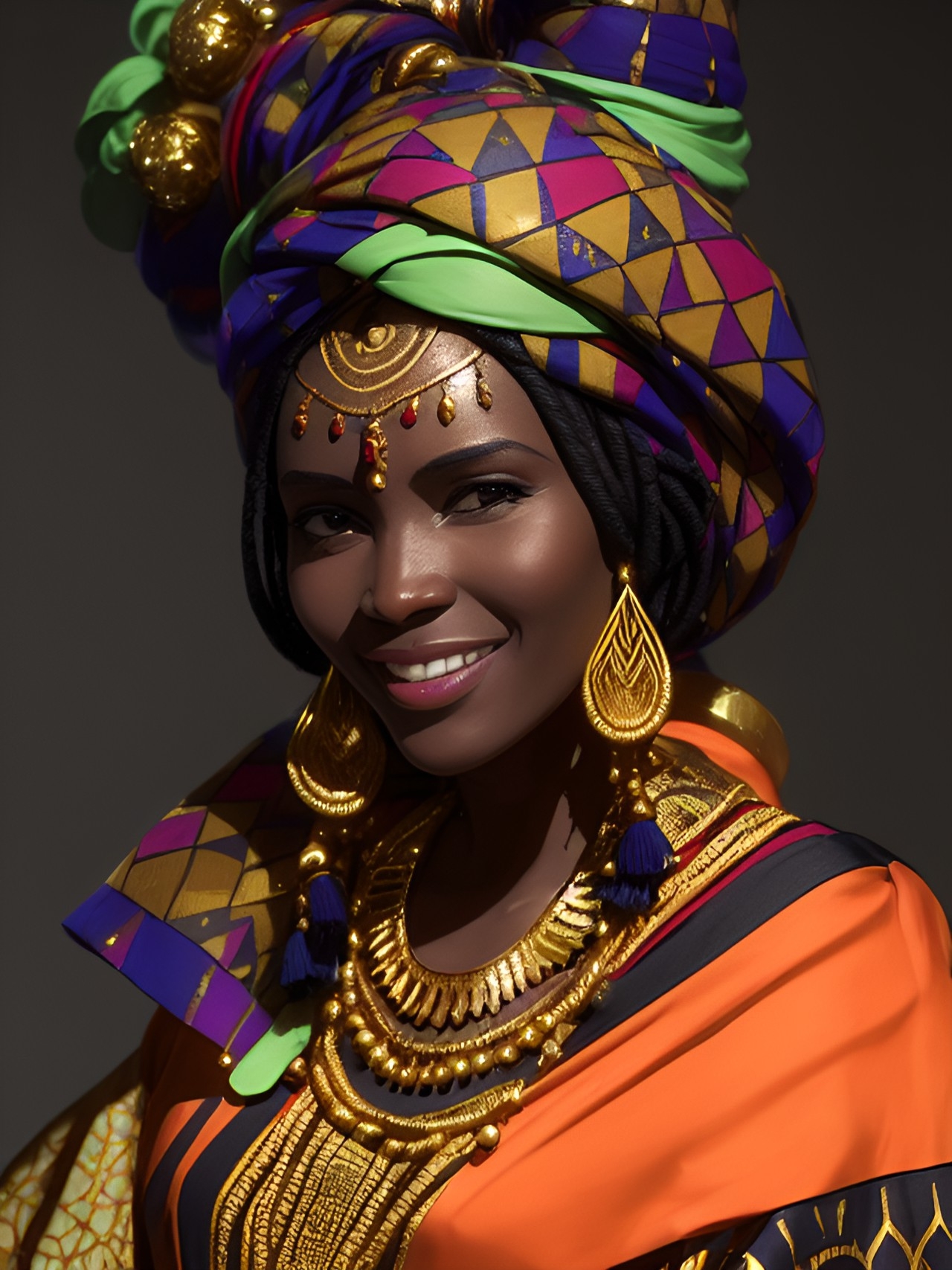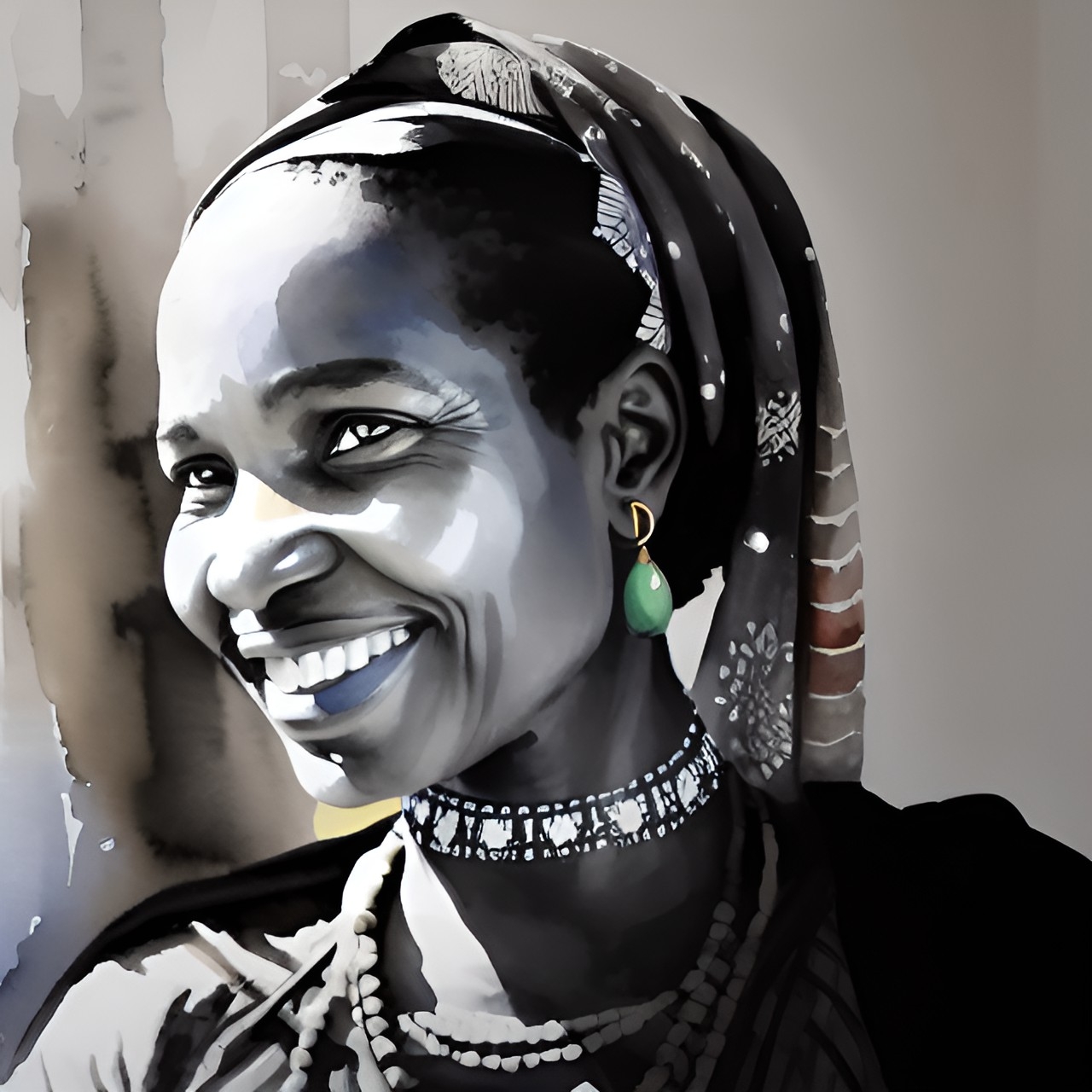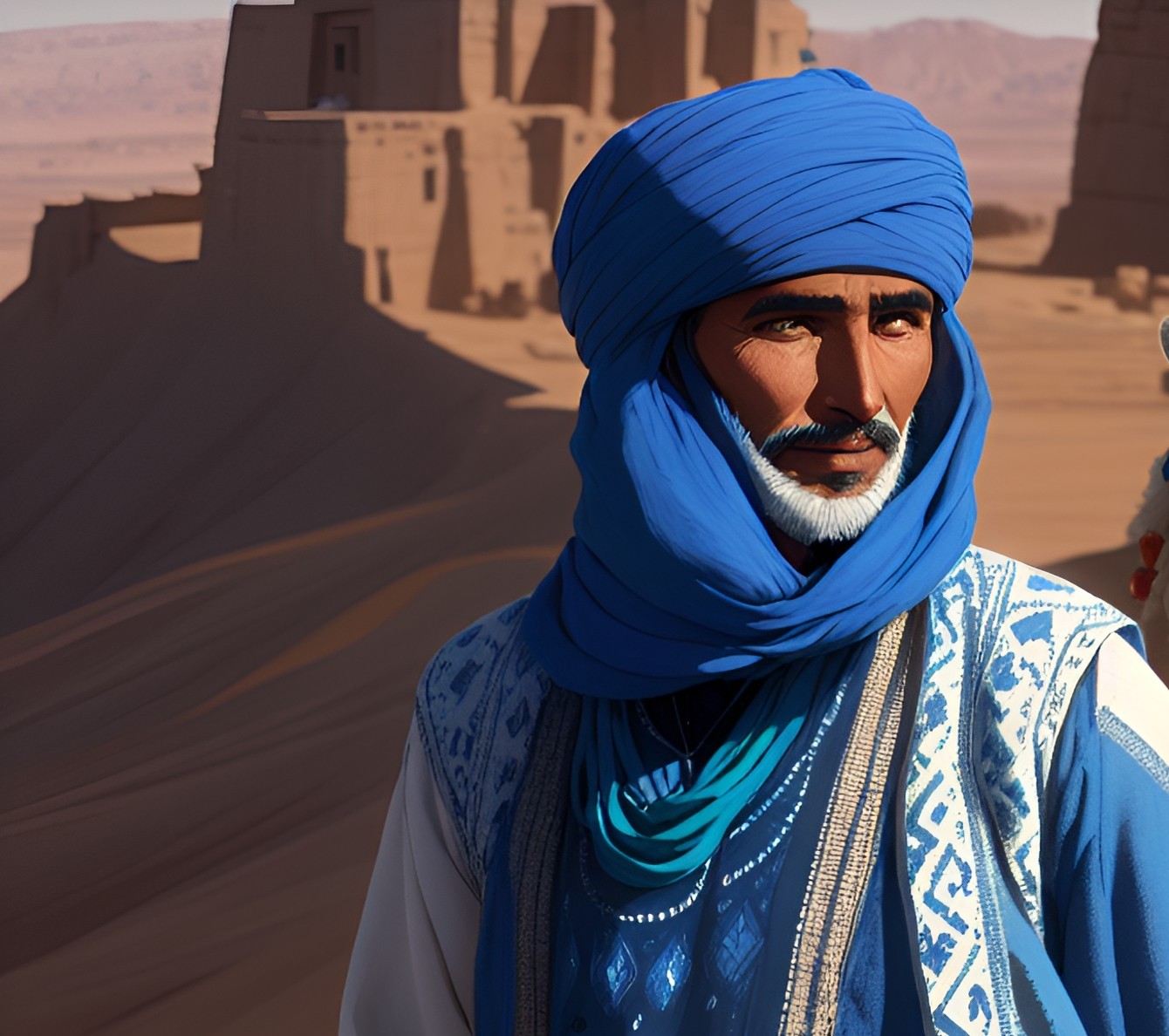Marrakesh
Marrakesh is the country in the northeastern-most edges of Alkelbulan. Keyh Sea is its northern border with Libu and Aznag to the west, Turkiye to the east and the Dar Emirates to the south. Marrakesh is one of the few countries in Shamsi not split between the Shamsi Desert and Kasar Wuta. Most citizens live within their capital, Anfa, or within various oases and wadis settlements further west. Marrakesh has always been a center of trade between Alkelbulan and Eluziar, whether by sea or through Flumen Pontem, and this role continues to this day.
Ruling Organizations
State Religion
Official Languages
Neighboring Countries
Geography
The coast of Marrakesh is very much like that of Libu, hyperarid but moistened at dawn and dusk by sea fog and home to a variety of lichens and succulents. Further inland, plenitful dry and flat hamadas or arid plains are interspersed between sandy erg (dunefields) in the west while the east is home to the sandstone massifs and imposing mountains of Idraren Draren. Higher altitudes are cooler, able to support sparse temperate woodlands and xeric shrublands. Idraren Draren sprawls across Marrakesh and into Libu, home to many smaller chains and known for possessing dangerous radiation in its depths. Aside from the Imaziɣen, most settlements are built away from these dangerous peaks. Oases and springs grant life between the unforgiving desert and dangerous mountains, most prevalent in sandstone wadis. Underground water hides beneath these dried waterways but also along the border with Sesli Plato and Skaney as water overflows from the mesa.
Government
There is a single royal line in Marrakesh which controls the monarchy, descending from the Arabiyy invaders which overtook the original Imaziɣen settlement. In fact, the upper echelons of government in Marrakesh are strictly Arabiyy-Imazighen. This royal line is recognized by Ilnid and Khalifah al-Rasul, having married into Ahl al-Bayt centuries ago. It was this arrangement which retained peace in Marrakesh for thousands of years, peaceful but unchanging and stagnant. Marrakesh was the western wall of Khalifah al-Rasul, a wall which came tumbling down with the invasion of the Kingdom of Accia.
The noblity serving the royal family are usually Wollof or Fulbe geer, a mixture of merchants, marabouts (religious leaders), landowners and even warriors. Despite the interests of the Wollof in Marrakesh, most landowners are either Fulbe or Imazighen. Oases towns and farmland in Marrakesh are usually owned by these Fulbe or Imazighen nobility and worked by Haratin jaam. These positions are static, inherited by their children, but the highest strata of their government is reserved for the Arabiyy-Imazighen elite, usually extensions of Ahl al-Bayt.
The noblity serving the royal family are usually Wollof or Fulbe geer, a mixture of merchants, marabouts (religious leaders), landowners and even warriors. Despite the interests of the Wollof in Marrakesh, most landowners are either Fulbe or Imazighen. Oases towns and farmland in Marrakesh are usually owned by these Fulbe or Imazighen nobility and worked by Haratin jaam. These positions are static, inherited by their children, but the highest strata of their government is reserved for the Arabiyy-Imazighen elite, usually extensions of Ahl al-Bayt.
Society
Marrakesh is home to a strict, patriarchal caste system. Some terms are different from language to language but the organizational staple to this system is the division of people into a ruling caste, a caste of artists and artisans and lastly a class of slaves and serfs. Geer are at the top of the hierarchy, working in government, as merchants and landowners. Nyeenyo is the class of artisans and artists. Last are the jaam, slaves captured in war, raids or bought from desperate parents or distant lands. However, after the conquests of the Kingdom of Accia, these slaves have been freed and most have entered into sharecropping contracts or indentured servitude to survive. All castes are totally hereditary, children inheriting the caste of their parents, and are locked into these roles as intermarriage between castes is not allowed.
Geer
Geer ensure and propogate the traditions of endogomy, slavery and patron-client dependancy, stubbronly clinging to their system and unabashedly using their Mental Manifestations to control their citizens. Only geer can own property, a right that is passed down through patriarchal lineages. Geer are almost exclusively Wollof, Fulbe or Arabiyy. Nobles oversee territories and collect tributes or taxes. Meanwhile, the lowest rung of Geer are the baadoolo, those lacking political power but still owning property. As Keshian socieity is patriarchal, geer women are not allowed careers of any kind, especially ones which are political or religious. Yet women who were wealthy enough to sustain such a lifestyle are envied by poorer women, a secluded and leisurely life the ideal within Keshian society.
Nyeenyo
Nyeenyo is an umbrella for a whole host of artisan trades. Blacksmith, weaver, dyer, potter, tanner, tailor, thatcher, jeweler. All of these trades fall under this wide reaching caste. Some nyeenyo are regarded more highly than others such as a goldsmith being more respectable than a tanner who touches animal skins. Unlike the upper clas, nyeenyo woman are allowed to work specific trades such as farming, midwifery and the making of pots. However, all other trades are reserved for men. Below even the nyeenyo but still possessing supposed freedom are griots. Griots are musicians, historians, scholars, artists, poets, storytellers, etc.
Jaam
Jaam are the labor force of Marrakesh, comprised almost entirely of Haratin but there are artisans, performers and even farmers which are Fulbe or Wollof too. Freed Haratin in particular have entered into sharecropping agreements with wealthy Geer or work under patron-client contracts, indentured servitude or actual continued slavery. In the case of sharecropping, those working a field must pay waref, taxes and rent, to the Geer who owns the land in addition to more than half of what they grow. The Haratin enter into these agreements not because they want to but because they have little to no other opportunity to survive, most serving the same master their ancestors were enslaved by!
Culture
Marrakeshian artisans are world renown, particularly skilled in the creation of silver jewelry. These pieces are a favorite of Imaziɣen women, possessing intricate embellishments. Artisans inhabit a place in the caste system just above the jaam, entered into patron-client contracts with influential Wollof and Arabiyy clans though there are Haratin artisans as well. Nearly every Keshian is either an artisan, griot (performer) or farmer in rural settings. It is in fact the skills and goods produced by this caste of artisans that feeds the caravan trade across northern Alkelbulan and now with the Kingdom of Accia.
History
The original inhabitants of what is now Marrakesh were nomadic Imaziɣen tribes who settled into a sedentary lifestyle, focusing on agriculture along the verdant edges of the desert. Eventually, Ilnid set his eyes on this burgeoning desert settlement, his followers leading several incursions into their lands. In response to these repeated attacks, many abandoned their settlement and fled into the irradiated hills of Idraren Draren. Yet this wasn't the end of Imazighen involvement. A confederation of Imazighen clans pushed the invaders out and established their own empire, overtaking all of eastern Shamsi including current day Dar. Despite this victory, Ilnid brought down this short lived empire with a heavy hammer. Ilnid guaranteed a ruling position to whoever retook Marrakesh in his interest, a number of Arabiyy tribes vying for this victory. Eventually, the Beni Hassan tribe overtook the Imazighen leaders and his descendants have ruled in Anfa to this day, even after the Kingdom of Accia annexed Marrakesh. Imaziɣen continue to live within Marakesh, assimilating into the Arabiyy caste system until even the ruling clans are both Arabiyy and Imazighen!
As the Kingdom of Accia took control of Marrakesh, they didn't take any immediate stance against the caste system and slave trade rife in Shamsi and Kasar Wuta. It wasn't until these slaves began serving in AMTP and the Accian Military that any protest began, finding the thought of their allies returning to slavery after service unacceptable--or so the story goes. The kingdom took a drastic stance, all at once, outlawing slavery amid their territories and offering the chance of freedom to all slaves in those lands outside their grasp. While they have continued this stance throughout the centuries, they have done very little to enforce anit-slavery laws and perhaps even less to reform the political and economic instituions which depend on these slaves and lower castes. And power still lies in the hands of Arabiyy-Imaziɣen aristocrats. There was a phase of their history in which Accia tried to outlaw not only slavery but Islam al'Rasul too. Marakeshians, or Keshians, immediately revolted agains the kingdom in outrage, having fully embraced Islam al'Rasul. Several coups were staged while the kingdom held their ground but ,eventually, this conflict was settled by a series of compromises and treaties which preserved the backbone of their beliefs while retaining sovreignty over their lands.
As the Kingdom of Accia took control of Marrakesh, they didn't take any immediate stance against the caste system and slave trade rife in Shamsi and Kasar Wuta. It wasn't until these slaves began serving in AMTP and the Accian Military that any protest began, finding the thought of their allies returning to slavery after service unacceptable--or so the story goes. The kingdom took a drastic stance, all at once, outlawing slavery amid their territories and offering the chance of freedom to all slaves in those lands outside their grasp. While they have continued this stance throughout the centuries, they have done very little to enforce anit-slavery laws and perhaps even less to reform the political and economic instituions which depend on these slaves and lower castes. And power still lies in the hands of Arabiyy-Imaziɣen aristocrats. There was a phase of their history in which Accia tried to outlaw not only slavery but Islam al'Rasul too. Marakeshians, or Keshians, immediately revolted agains the kingdom in outrage, having fully embraced Islam al'Rasul. Several coups were staged while the kingdom held their ground but ,eventually, this conflict was settled by a series of compromises and treaties which preserved the backbone of their beliefs while retaining sovreignty over their lands.
Demography
Culturally, all Keshians are muslims and their culture has been drastically influenced by the Arabiyy. Ethnically, Marrakesh is fairly diverse. Nawaksut in particular is an important port along the Keyh Sea, almost half of their population being Haratin while 30% are of Imaziɣen-Arabiyy descent and the rest are Fulbe, Mande and Wollof.













Comments